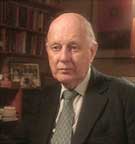Climate “Science” by the Pound
A climate change petition started in 1988 by the tobacco industry’s favourite scientist (Federick Seitz), has just been re-released with a reported 31,072 signatures of “scientists” – some of whom are reported to actually work in the field.
The Oregon Petition was originally started by Dr. Seitz (formerly the principal adviser to the RJ Reynolds medical research program) and by Arthur B. Robinson, a lapsed biochemist who now operates the one-man Oregon Institute of Science and Medicine.
Robinson himself was quoted recently saying that a survey was an inadequate way to pursue science. “The numbers shouldn’t matter. But if they want warm bodies, we have them.”
But that turns out to be an overstatement. Seitz, for example, died in March.
But the odd quirk has not lessened the excitement that this document is generating in the denier press. Take for example the breathless coverage offered by the National Post. Frequent contributor Lawrence Solomon declares that 32,000 is even more than the number of journalists who attended the Rio Earth Summit in 1992, which surely must prove something.
Of course, Solomon recently produced a whole book entitled The Deniers, which, despite the title, included NO ONE who actually takes issue with the fact that human-caused greenhouse gas emissions are warming the planet at an unprecedented rate.
Yet now he trumpets this ever-expanding list of (unsubstantiated) names and celebrates their credibility, bizarrely, on the basis that “the effort was spearheaded by Dr. Frederick Seitz, past president of the National Academy of Sciences and of Rockefeller University, and as reputable as they come.”
“As reputable as they come”? Well that may have been true in 1962. when Seitz was appointed head of the National Academy of Sciences. It may still have been true in 1968, when he was named president at Rockefeller. But things apparently started going downhill, even before Seitz helped found the Exxon-funded George C. Marshall Institute, in 1984. And by 1989, Bill Hobbs, a senior executive at RJ Reynolds, was telling people that “Dr. Seitz is quite elderly and not sufficiently rational to offer advice.” (He was just 78 at the time.)
So, here’s a guy who ended his career as paid flak for the tobacco and arms industries, who wsas dismissed by a tobacco executive in 1989 as “not sufficiently rational,” who nine years later embarrassed himself and the National Academy of Sciences by helping to present his bogus petition as a NAS project, and Lawrence Solomon calls him “as reputable as they come.”
That should be very helpful in establishing the relative reputability of everyone else on this list.
One last comment: 32,000 turns out to be an interesting number. It’s a favorite number for Art Robinson, keeper of the petition. That, he says, is how many copies he has sold of his Christian fundamentalist home-schooling kit – which is based, in part, on a free version of the 1911 Encyclopedia Brittanica.
As Larry Solomon might say: “as reputable as they come.”
Subscribe to our newsletter
Stay up to date with DeSmog news and alerts






